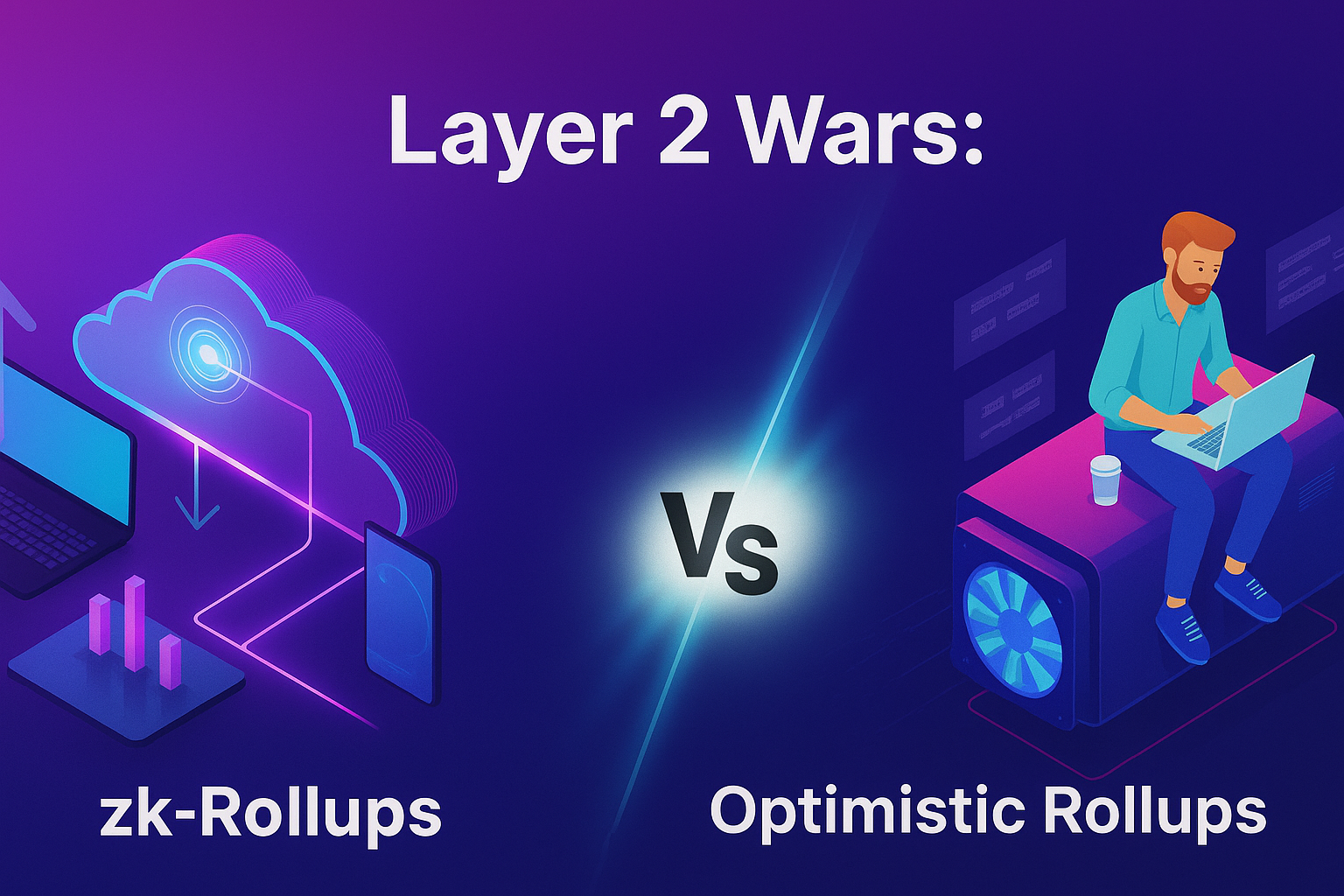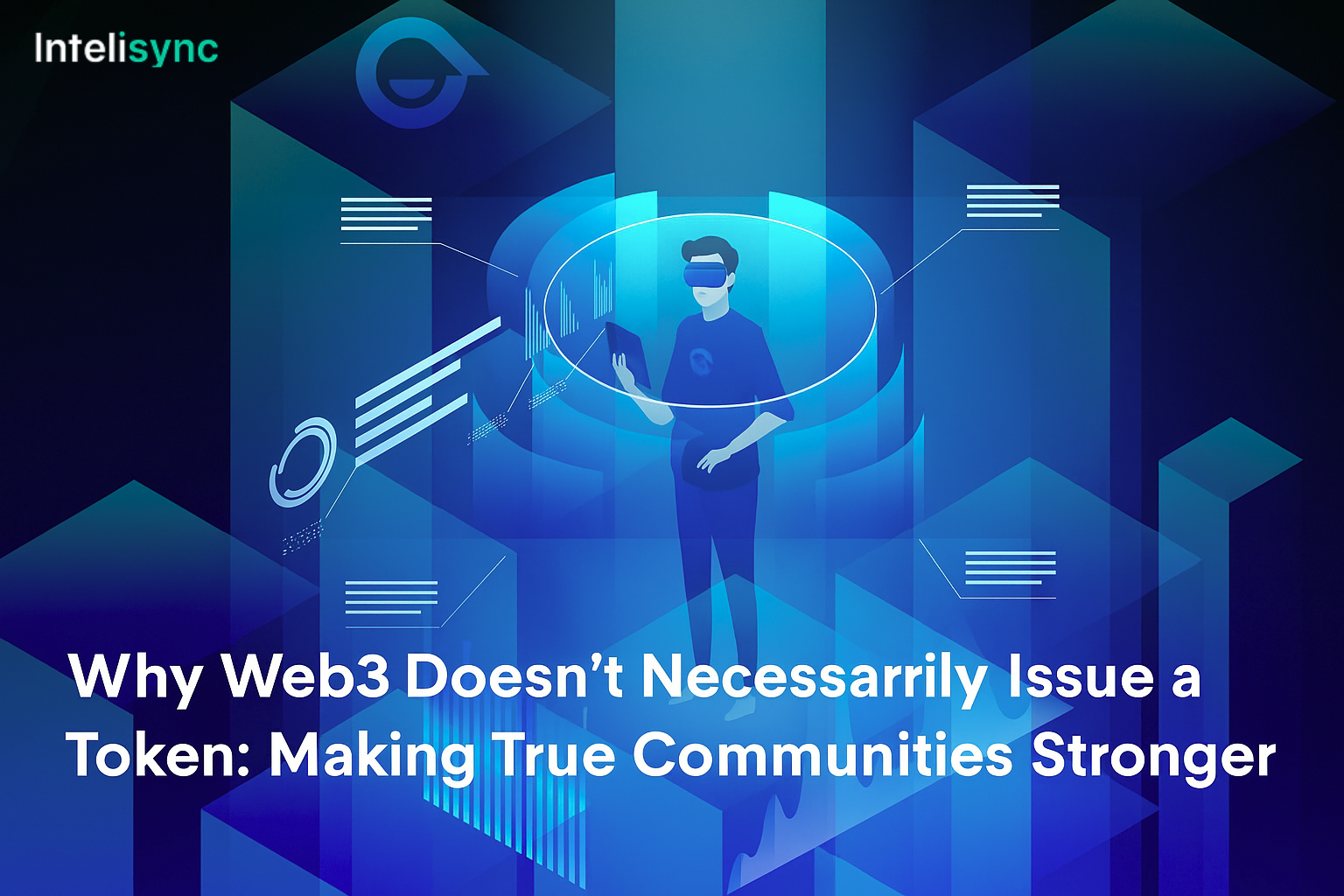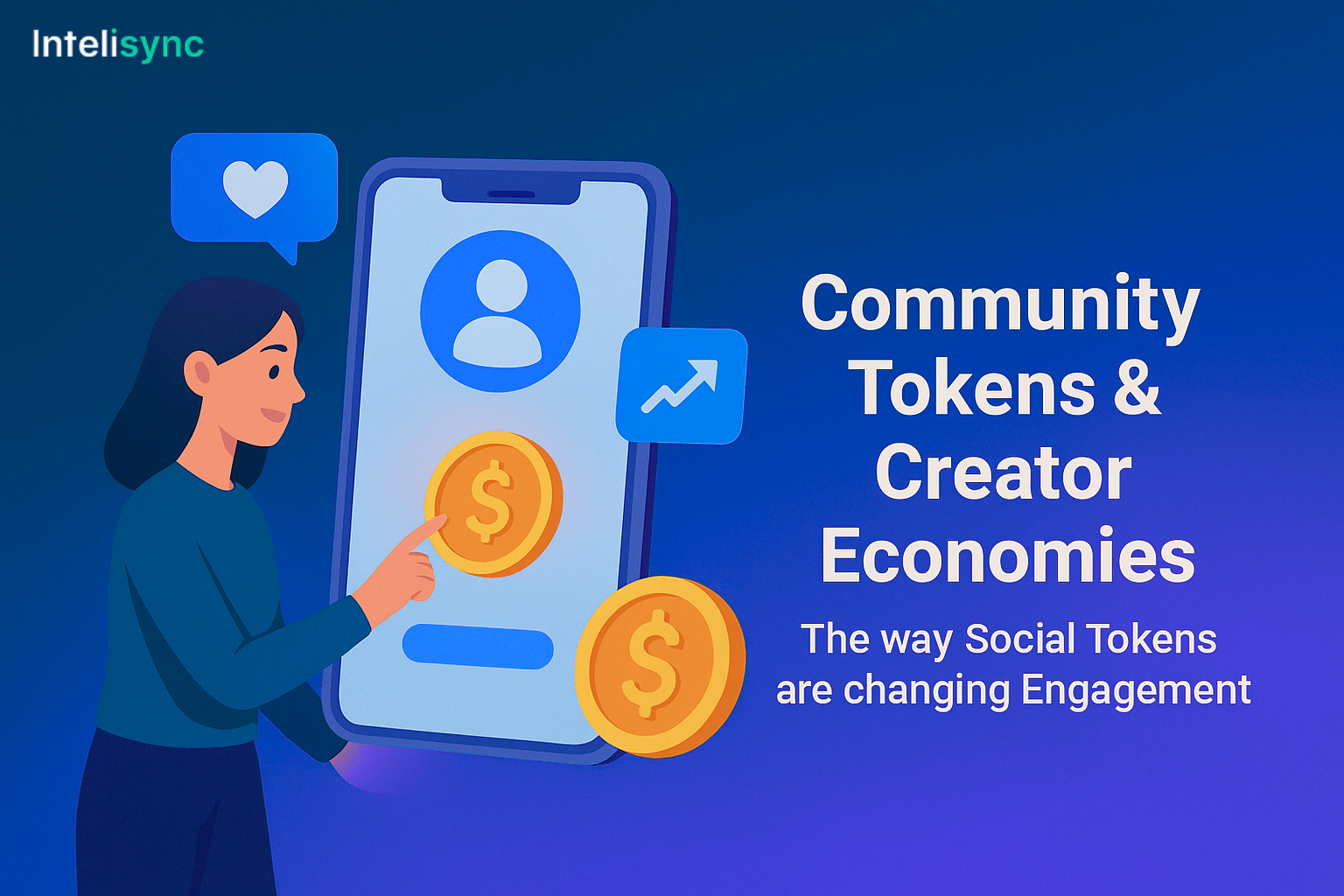Introduction
Scalability remains one of the biggest challenges for Ethereum and other blockchains. Layer 2 solutions have emerged as the answer, with zk-Rollups and Optimistic Rollups leading the charge. But which one is better? This blog dives deep into the “Layer 2 Wars.”
Understanding Layer 2 Scaling
Layer 2 scaling solutions are built on top of Ethereum, designed to improve transaction throughput and reduce gas fees while maintaining security.
What Are Rollups?
Rollups bundle multiple transactions and post them to Ethereum in a single batch. This reduces congestion while leveraging Ethereum’s security.
zk-Rollups Explained
How zk-Rollups Work
zk-Rollups use zero-knowledge proofs to validate transactions. Instead of executing every transaction on Ethereum, zk-Rollups generate a cryptographic proof, which is verified on-chain.
Benefits of zk-Rollups
- Security: Strong cryptographic guarantees.
- Instant Finality: Transactions are verified almost instantly.
- Lower Costs: Efficient batching reduces gas usage.
Challenges of zk-Rollups
- Complexity: Cryptographic proofs require advanced mathematics.
- Developer Learning Curve: Harder for developers compared to optimistic rollups.
- Limited EVM Compatibility: zkEVMs are still evolving.
Optimistic Rollups Explained
How Optimistic Rollups Work
Optimistic Rollups assume transactions are valid by default. They only run fraud proofs when someone challenges a transaction.
Benefits of Optimistic Rollups
- EVM Compatibility: Works smoothly with existing Ethereum applications.
- Easier for Developers: Simple migration from Ethereum.
- Strong Ecosystem: Widely adopted by projects like Arbitrum and Optimism.
Challenges of Optimistic Rollups
- Fraud Proof Delays: Transactions can take up to 7 days to finalize.
- Higher Costs: Gas usage is higher compared to zk-Rollups.
- Security Assumptions: Relies on honest participants to challenge fraud.
zk-Rollups vs. Optimistic Rollups
Speed and Finality
- zk-Rollups: Instant finality with cryptographic proofs.
- Optimistic Rollups: Delays due to fraud-proof periods.
Cost Efficiency
- zk-Rollups: Lower fees thanks to proof-based batching.
- Optimistic Rollups: Slightly higher fees due to on-chain fraud proof system.
Developer Experience
- zk-Rollups: Steeper learning curve but advancing fast with zkEVMs.
- Optimistic Rollups: Easy integration for Ethereum developers.
Security Model
- zk-Rollups: Cryptographic security with minimal trust.
- Optimistic Rollups: Dependent on validators to catch fraud.
Real-World Examples
- zk-Rollups: zkSync, StarkNet, Polygon zkEVM.
- Optimistic Rollups: Arbitrum, Optimism, Boba Network.
Companies like Intelisync.ai are assisting startups and enterprises in navigating these Layer 2 solutions by offering development, integration, and consulting services to maximize scalability and efficiency.
The Future of Layer 2 Scaling
Both zk-Rollups and Optimistic Rollups are crucial to Ethereum’s scalability roadmap. While zk-Rollups promise higher efficiency and stronger security, Optimistic Rollups currently dominate due to developer-friendliness and ecosystem maturity.
Conclusion
The Layer 2 Wars are not about one solution eliminating the other. Instead, zk-Rollups and Optimistic Rollups complement each other, offering different advantages depending on developer needs. As Ethereum evolves, both will likely coexist, shaping the future of scalable, affordable, and secure blockchain applications.
If your business wants to leverage these Layer 2 innovations, Intelisync.ai provides expert solutions to help integrate and optimize your Web3 projects for scalability and growth.







